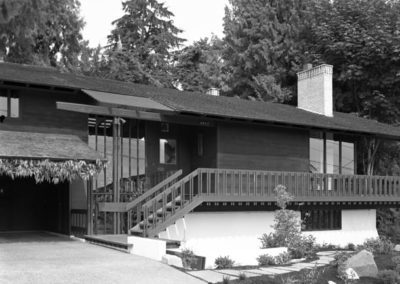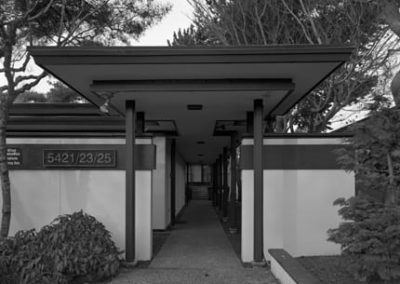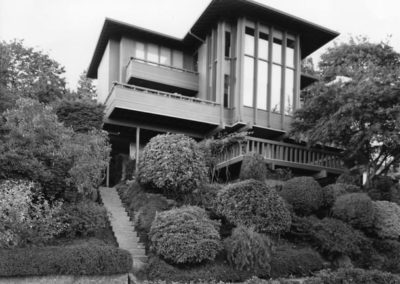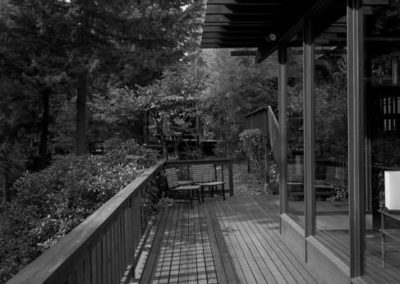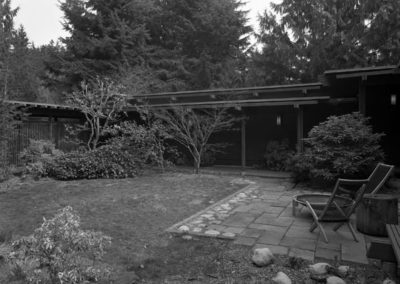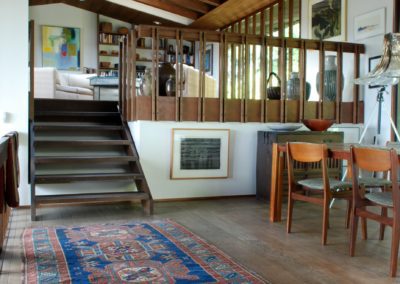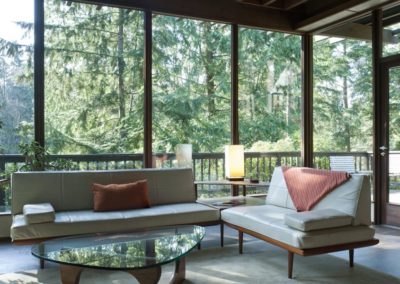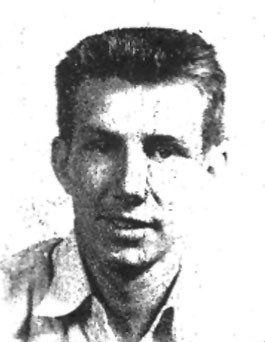
Anderson, Ralph D.
(1924 – 2010)
A Perfect Design
Learning About Architecture
Building Houses
Hidden Lake
Northwest Architecture
My Best House
Born on October 21, 1924 in Seattle, Ralph D. Anderson received his formal architectural training at the University of Washington, graduating in 1951.
His early work experiences included a stop in the office of Paul H. Kirk before he opened his own practice in the late 1950s. He received his Washington State architectural license in 1954.
While Anderson’s early projects encompassed the aesthetic of Mies van der Rohe, he quickly shifted to a new mode of thinking and crafted his designs to blend with the Northwest landscape. Broad windows, hovering protective rooflines, exposed framing and an emphasis on verticality, became his signature. Many designs feature a formal T-shape plan, and take in dramatic views of the water or mountains and today epitomize what has become known as the Northwest Regional Style.
Notable projects include the Dr. Tucker House (1954), the Jans House (1959), the McNair House (1961), the Miller House (c. 1963), the Strom House (1965), the Pifer House (1970), the Runion House (1972), and the Lamphere House (1973).
While Anderson considered himself the “poor man’s Roland Terry,” many of his homes catered to the affluent residents of Bellevue and Mercer Island. Many of his projects, both residential and commercial, were featured in a variety of local and regional newspapers and magazines including the Seattle Times, Sunset, House Beautiful, Architectural Record, and Pacific Architect & Builder/Architecture West.
Anderson’s commercial buildings are equal to his residential designs. Many incorporate the use of brick combined with wood to create playful yet comfortable working environments. Notable projects include Bellefield Office Park (1972) in Bellevue, the Middleton, Berner & Wood Medical Building (1974), also in Bellevue, Seattle Trust Court (1977), several buildings for the University of Washington Institute of Oceanography (1962-67) on Orcas Island, Fisheries Center Addition at the University of Washington (1968), and the Ambaum Medical & Dental Clinic (1965) in Seattle.
Anderson was one of the early historic preservationists in the Pacific Northwest, and he was instrumental in saving Pioneer Square and Pike Place Market in the late 1960s and early 1970s. He personally acquired and rehabilitated several pivotal historic buildings in Pioneer Square including the Grand Central Building (1971) and the Pioneer Building (1970-1975). Other restoration/rehabilitation projects included the Fisher Studio Building in Seattle, the Fort Worden Commander House (1976), and the Company Store at Port Gamble. His adaptive reuse projects included the American Can Co. Plant which he skillfully turned into the Seattle Trade Center.
In 1978, Anderson broadened his growing firm to include a variety of partners. T. William Booth and Robert Koch joined the partnership in 1980, and Glen Duarte in 1985.
Anderson’s impact to the built environment in and around Seattle continues to be strongly felt. He served as a mentor for a new generation of architects which continue his tradition of merging the natural Pacific Northwest landscape into the physical architecture of a structure.
Ralph Anderson passed away in Seattle on October 24, 2010. (obituary)
Oral History Project: Ralph Anderson participated in Docomomo US/WEWA’s oral history project. He was interviewed in March 2008. A complete transcript of the interview can be downloaded on the left sidebar. Segments from the interview can be heard by clicking the audio files on the left sidebar.
